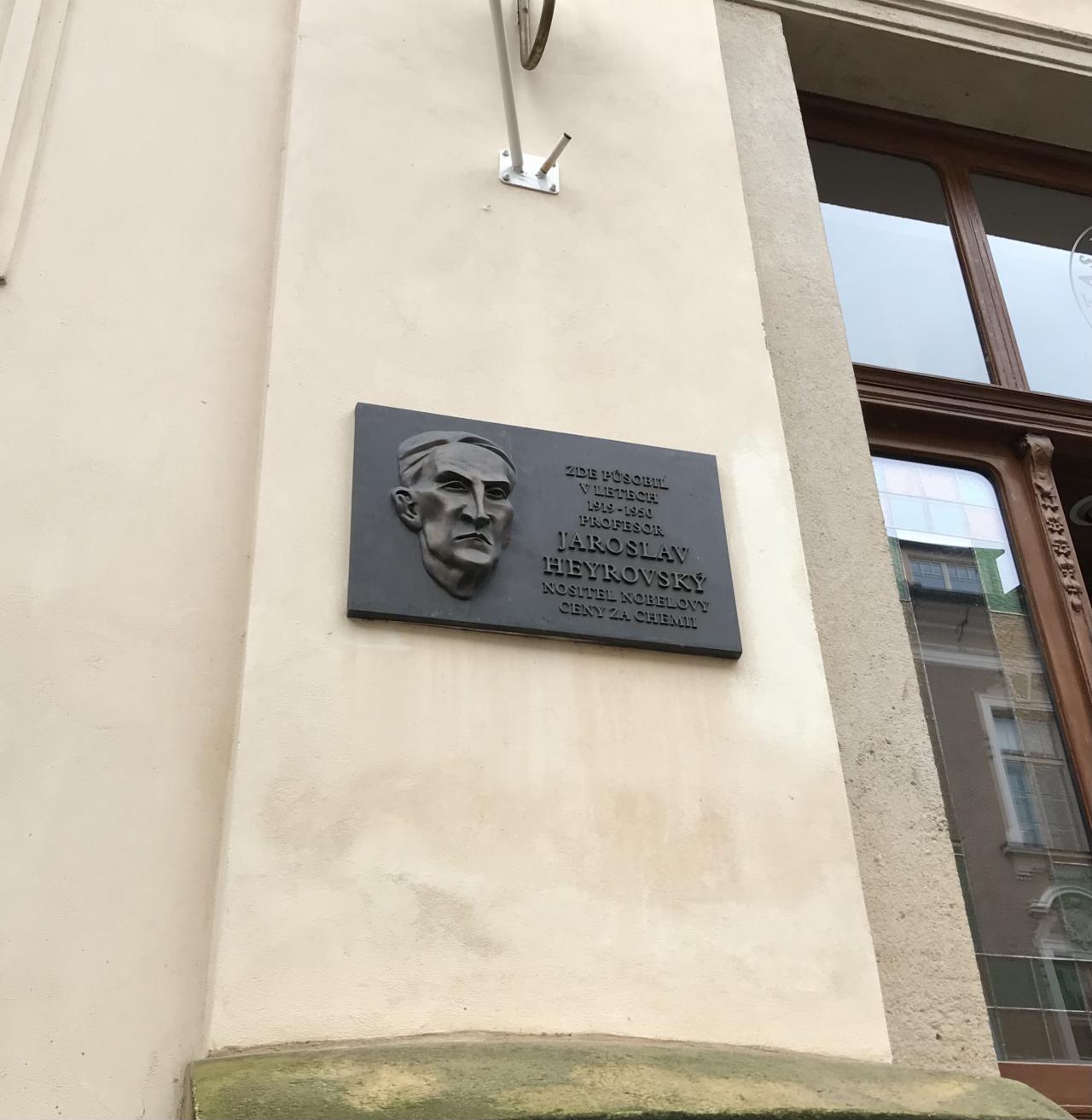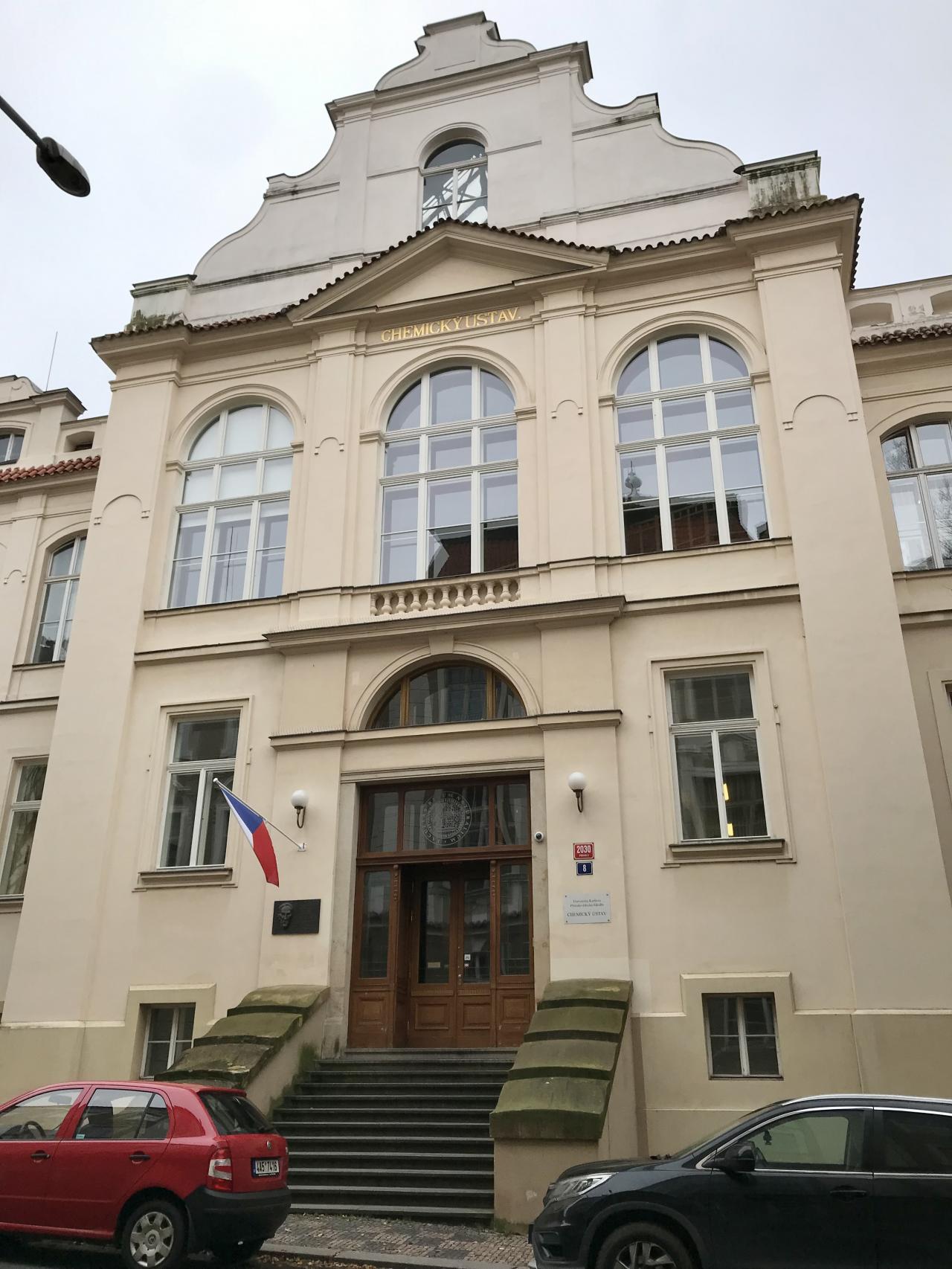The stone memorial plaque with a bronze relief of Jaroslav Heyrovský (20 December 1890 Prague - 27 March 1967 Prague) on the facade of the building at 2030 Hlavova Street in Prague's Albertov district bears the text
HERE WORKED / 1919 - 1950 / PROFESSOR / JAROSLAV / HEYROVSKÝ / NOBEL PRIZE / WINNER IN CHEMISTRY
The bronze relief is the work of Jitka Arazimová. The placement of the memorial plaque was initiated by the chemistry section of the Faculty of Science of Charles University. The memorial site was unveiled on 10 December 2009 and this public event was added to the university and academic celebrations of the 50th anniversary of the award of the Nobel Prize to Jaroslav Heyrovský (1959). The unveiling of the plaque was attended by the then Rector of the University, Václav Hampl, and the Dean of the Faculty of Science, Bohuslav Gaš, as well as a former pupil of Heyrovský, Robert Kalova.
Heyrovský received his doctorate from Charles University in 1918 and the following year he joined Bohuslav Brauner as an assistant at the then Institute of Inorganic and Analytical Chemistry of Charles University. After his habilitation he became the first associate professor of physical chemistry at Charles University (1920). His research was influenced by his meeting with Bohumil Kučera, the discoverer of the mercury drop electrode. Thanks to his experiments with this device, Heyrovsky in 1922 was the first to observe a new phenomenon - electrolysis on a mercury drop electrode.
In 1926 Heyrovský was appointed full professor. Between 1922 and 1939 he directed the Institute of Physical Chemistry at the Faculty of Science of Charles University. In 1928 he founded the journal Collection of Czechoslovak Chemical Communications with his colleague Emil Votoček. In 1933, Heyrovsky's first monograph (Application of the Polarographic Method in Practical Chemistry) was published. This was the beginning of a new phase of Heyrovsky's research at the Prague Polarographic School, where scientists from all over the world came to visit and from where Heyrovsky himself also travelled abroad to lecture. Heyrovsky was an excellent scientist, but also a great university teacher - he had a great sense of humour and was known for his informal approach in lectures and practical sessions. During the Second World War he continued his research thanks to the German professor Johann Böhm. He worked in particular on the development of polarography using the oscilloscope (oscillographic polarography). After the war he was accused of collaboration, but this was never proven.
In 1950, on 1 April, an independent Institute of Polarography was established, headed by Heyrovský until 1963, when he resigned for health reasons. Heyrovsky is the author of more than 130 books and scientific articles. After the Second World War he received several honorary doctorates at leading European universities (Dresden, Warsaw, Paris, Aix-Marseille, Frankfurt). In 1951 he received the State Prize of the 1st degree, in 1955 and 1960 the Order of the Republic. In 1962 he received the Gold Medal of the Czechoslovak Academy of Sciences for services to science and humanity, and in 1965 the Silver Medal of the London Polarographic Society. He was also a member of a number of foreign academies of science, an honorary member of a number of chemical societies and, last but not least, an academician of the Czechoslovak Academy of Sciences.
Kvítek, M.: Průkopníci vědy a techniky v českých zemích. Praha, 1994, s. 52–53.
Benešová, O.: Nobelova cena. Historie Nobelovy nadace: laureáti Nobelovy ceny 1901–1996. Praha 1996, s. 36.
Koryta, J.: Jaroslav Heyrovský, Praha 1990.
[20. 6. 2022].








